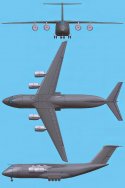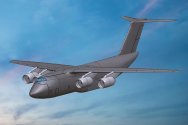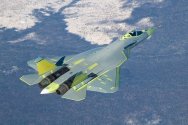You are using an out of date browser. It may not display this or other websites correctly.
You should upgrade or use an alternative browser.
You should upgrade or use an alternative browser.
Russian Military News, Reports, Data, etc.
- Thread starter tphuang
- Start date
Supercam winged UAV is a highly underrated platform.
Because it uses electric engines it is more silent than the Orlan, yet still has reasonable range. The airframe also seems to be low visibility.
It was being used as a support UAV for Lancets. This way, the Lancet doesn't need to scout and loiter for targets. The Supercam does it first for the Lancet. When target is found, the Supercam user calls for the Lancet strike. Then the Supercam stays around to verify the Lancet kill. The effectiveness of Lancets in 2023 appears to have a lot to do with the Supercam.
Almost every Lancet footage out there from 2023 onwards are made from a Supercam.
For such usage, the Supercam must mirror the Lancet's characteristics such as it's maximum range (+80km). When the Lancet acquired thermal imaging, so did the Supercam, hence why Lancet videos on the third person are so often black and white now.
Of course the Supercam is also used as a general reconnaissance platform and artillery spotter, though it lacks the laser targeting for Krasnopols like the Orlan.
Footage of the use of the Nona-M1 towed 120-mm mortar by Russian military personnel. The Russian 2B23 Nona-M1 mortar was developed by specialists from the Central Research Institute of Precision Engineering and entered service in 2007. Externally, it differs from the more familiar 2B14-1 "Tray" mortar and the 2S12 "Sani" mortar; having a rifled barrel, it can also use ammunition from the 2S9 "Nona-S" self-propelled airborne artillery gun. To aim the mortar, a modified MPM-44M mortar sight is used. The mass of the mortar in the traveling position is 514 kg. Rate of fire up to 10 rounds per minute. The target firing range of the Nona-M1 mortar with a high-explosive fragmentation mine is 7200 meters, and with a projectile - 8800 meters. When using active-reactive ammunition - up to 12800 meters. The mortar is brought into firing position in 30 seconds, the crew of the mortar is 5 people.
The first footage of the use by the Russian Black Sea Fleet of the Alexandrite-ISPUM-E underwater complex designed to search and destroy mines. The Alexandrite-ISPUM complex is located on a Project 12700 sea minesweeper of the Baltic Fleet. The Alexandrite-ISPUM complex was developed in 2015 by the scientific enterprise Region. The complex became the development of the first similar third-generation system, the Mayovka underwater mine detector-detector, which is now used in the Black Sea Fleet. The complex was first used in the Baltic, where it was used to find not only sunken ships, but also small items of sailors’ uniforms. The Alexandrite-ISPUM complex is capable of detecting an object under a three-meter layer of silt. The Alexandrite-ISPUM complex includes a hydroacoustic ship station, a towed hydroacoustic station and a self-propelled underwater vehicle. The system works as follows: a towed hydroacoustic station “scans” the aquatic and underwater environment. A self-propelled underwater vehicle searches for suspicious objects within a radius of 500 meters and at a depth of up to 300 meters; it can also be equipped with a bomb. After detecting dangerous objects and mines, explosive charges are installed on them or cable cutters are used. If necessary, the devices can tow a mine into shallow water and destroy it there. The fourth generation complex “Alexandrite-ISPUM-E” is now the most modern Russian system for searching and destroying sea mines. It is planned to equip all Russian sea minesweepers of Project 12700 with the Alexandrite-ISPUM-E complexes.
deep modernization of SuperCam 350 based on practical experience. 4 hours loitering time.
and certainly it is not all about Drones.
This Su-25 often comes in media regarding Ukraine. once dig deeper it is the most important air asset in this whole Ukraine conflict behind attack choppers and no doubt it will have largest number of sorties. often mentioned flying like at 800km/hr at 20m to attack from distributed airbases.
Previous long write up about Su-25. over 60% pilots in southern military district trained on it. I have also read they managed reduced weight by 300Kg during modernization and further enhancement in engines that allow several sorties per day.
Su-25 belly landing during Ukraine.
Kalashnikov will present the SKAT 350 M drone for the first time at an exhibition in Saudi Arabia
The Kalashnikov Concern will present for the first time a complex with the SKAT 350 M UAV at the II World Defense Show - 2024, which will be held in the capital of Saudi Arabia, Riyadh, from February 4 to 8.
The serially produced SKAT 350 M UAV is designed for aerial surveillance, searching for objects in the optical and infrared ranges and is the result of a deep modernization of the well-proven Supercam 350 UAV. Taking into account practical experience in operating the device, Kalashnikov specialists significantly improved the aerodynamic properties of the product and modernized the complex ground control equipment.
The aircraft received new wing designs and control elements. The concern's specialists have increased their mechanical strength and operational reliability and automated many functions that facilitate the training and further work of the operator. The complex introduced an automatic operating mode for the PVD and a new battery controller, which increases its performance characteristics.
The SKAT 350 M uses a new target load with higher performance characteristics, and also implements technical solutions that improve the functioning of daytime and thermal imaging cameras. A modern module with updated algorithms makes it easier for the operator to acquire and sustainably track targets.
All of the above changes have already proven their effectiveness during practical use by users and have significantly increased the market attractiveness of the product.
The maximum take-off weight of the SKAT 350 M complex is 15 kg. The wingspan reaches 3.2 m; it can fly for up to 240 minutes, while developing a speed of 72 to 120 km/h. The range of the video channel varies from 70 to 100 km. The deployment time of the complex does not exceed 15 minutes. The complex takes off using an elastic or pneumatic catapult, and lands by parachute in automatic or semi-automatic modes.
and certainly it is not all about Drones.
This Su-25 often comes in media regarding Ukraine. once dig deeper it is the most important air asset in this whole Ukraine conflict behind attack choppers and no doubt it will have largest number of sorties. often mentioned flying like at 800km/hr at 20m to attack from distributed airbases.
Answering a question about the use of Su-25 attack aircraft in the North Military District zone, Vladimir Artyakov noted that the Su-25SM3 variant shows itself to be the most effective in the results of combat use. The modernization of attack aircraft is carried out at one of the aircraft repair plants. “ During the modernization, new sighting and navigation equipment, a new optical-laser thermal-television sighting system, a new satellite navigation system, as well as an electronic warfare complex and other systems are installed on the aircraft ,” he explained.
Previous long write up about Su-25. over 60% pilots in southern military district trained on it. I have also read they managed reduced weight by 300Kg during modernization and further enhancement in engines that allow several sorties per day.
According to the representative Russian Air Force's Southern Military District [SOUTH], over 60% of pilots had been trained air base on the Su-25SM3. "At present, the newly arrived aircraft completed maintenance work. Su-25SM3 an extensively modified version of the Su-25, and unlike its predecessor, can destroy tiny, movable and stationary ground objects without their visibility by day and night, as well as aerial targets,"
Su-25 belly landing during Ukraine.
At least 24 modern fighters delivered to the Russian Air Force in 2023
Indeed, in 2023, the Russian military aeronautical industry would have delivered to the country's air forces 22 to 28 new aircraft, perhaps more. Unlike in the pre-war years, Moscow no longer communicates openly on the quantities of aircraft delivered.
On the other hand, probably to support its international attractiveness and its communication, the press services of the armies systematically communicated, this year, on the nature of the deliveries made.
Concretely, there were, in 2023, : 2 concerned the Su-57, 5 the , 3 the Su-34M and 2 the Su-30SM. To this we can add 2 deliveries of Yak-130 training and attack aircraft.
Well ... "Russia Pursues Development Of New Military Transport Aircraft" by Piotr Butowski - January 29, 2024
These two images are from an Ilyushin patent and most likely depict the Il-100. (via Russian Defense Ministry)
Via

And I'm 100% sure, would it be a Chinese design, the social media all over would once again call it a blatant copy!

These two images are from an Ilyushin patent and most likely depict the Il-100. (via Russian Defense Ministry)
Via

And I'm 100% sure, would it be a Chinese design, the social media all over would once again call it a blatant copy!

That looks like the Slon aka PAK VTA. Except it has a T-tail.

The Russians have been working on the design for a long time. But without the PD-35 engines it won't fly.
I expect the Russians to eventually develop four new transport aircraft types. With twin PD-8, twin PD-14, twin PD-35, quad PD-35 engines.
But right now because the Western transport aircraft left the Russian market the industry is focused on building civilian transport airplanes. So I think the Il-76MD-90A will have to take up the slack.

The Russians have been working on the design for a long time. But without the PD-35 engines it won't fly.
I expect the Russians to eventually develop four new transport aircraft types. With twin PD-8, twin PD-14, twin PD-35, quad PD-35 engines.
But right now because the Western transport aircraft left the Russian market the industry is focused on building civilian transport airplanes. So I think the Il-76MD-90A will have to take up the slack.
Making some comments on the article.
Actually the first engine will likely either be a PD-28 or a PD-35. The Il-76 uses four 14 ton engines. The Il-96 uses four 17 ton engines. 2*14 = 28, 17*2 = 34
Having anything lower powered than 28 tons makes no sense. It won't allow a re-engine program where they make a new wing with half the engines for either aircraft.
This comment is outdated. The Russian government gave funding to continue PD-35 development. It is just that they don't have a test harness to test the whole engine including the large fan section yet. The government also hasn't decided on the final power level of the engine to be initially produced. But yes Aviadvigatel will be quite busy with making engines for the civilian transport aircraft.
Two thirds of the sales of Motor Sich were to Russia. If he hadn't sold engines to Russia he would have likely have had to close down the plant.
Russia also has a production facility for the An-124. So a restart of the production of the An-124 would likely be the cheapest option. But it would require the production of engines and probably avionics.
Actually the most powerful turboprops made in Russia are the NK-12MPM engines in the Tu-95.
"Initially, the PD-35 engine was intended for the Chinese-Russian Comac-UAC CR929 widebody airliner, and the 35-metric-ton version was planned as the first one. Then Russia invaded Ukraine in 2022, prompting Western sanctions. Due to the impact of the sanctions, UAC dropped out of the CR929 program in August 2023. Therefore, the lower-thrust engine—one of the PD-24s or PD-26s mentioned by Slyusar—will likely be the first modification created."
Actually the first engine will likely either be a PD-28 or a PD-35. The Il-76 uses four 14 ton engines. The Il-96 uses four 17 ton engines. 2*14 = 28, 17*2 = 34
Having anything lower powered than 28 tons makes no sense. It won't allow a re-engine program where they make a new wing with half the engines for either aircraft.
"In November 2023, Inozemtsev said previous plans to make PD-35s by 2027-28 are slipping by a couple of years, as funds have been redistributed to increase production of the PD-8, PD-14 and PS-90A engines needed for the aircraft."
This comment is outdated. The Russian government gave funding to continue PD-35 development. It is just that they don't have a test harness to test the whole engine including the large fan section yet. The government also hasn't decided on the final power level of the engine to be initially produced. But yes Aviadvigatel will be quite busy with making engines for the civilian transport aircraft.
"However, Motor Sich—whose owner was Vyacheslav Boguslayev, a Russophile—continued to overhaul engines for Russian An-124-100s for several years through intermediaries."
Two thirds of the sales of Motor Sich were to Russia. If he hadn't sold engines to Russia he would have likely have had to close down the plant.
"Finally in 2016, the Ural Civil Aviation Plant (UZGA) in Yekaterinburg, Russia, began D-18T overhauls. Now UEC says it has started production of many components of the D-18T and is able to do so with the modernized engine in Russia as well."
Russia also has a production facility for the An-124. So a restart of the production of the An-124 would likely be the cheapest option. But it would require the production of engines and probably avionics.
"The troubled Il-112V turboprop project—intended to have a maximum payload of 6 metric tons—had been developed for years but was abandoned after the fatal crash of the prototype. Its structural weight turned out to be much heavier than assumed, while the Klimov TV7-117ST turboprops—the most powerful turboprops available in Russia—turned out to be too weak."
Actually the most powerful turboprops made in Russia are the NK-12MPM engines in the Tu-95.
Last edited:

